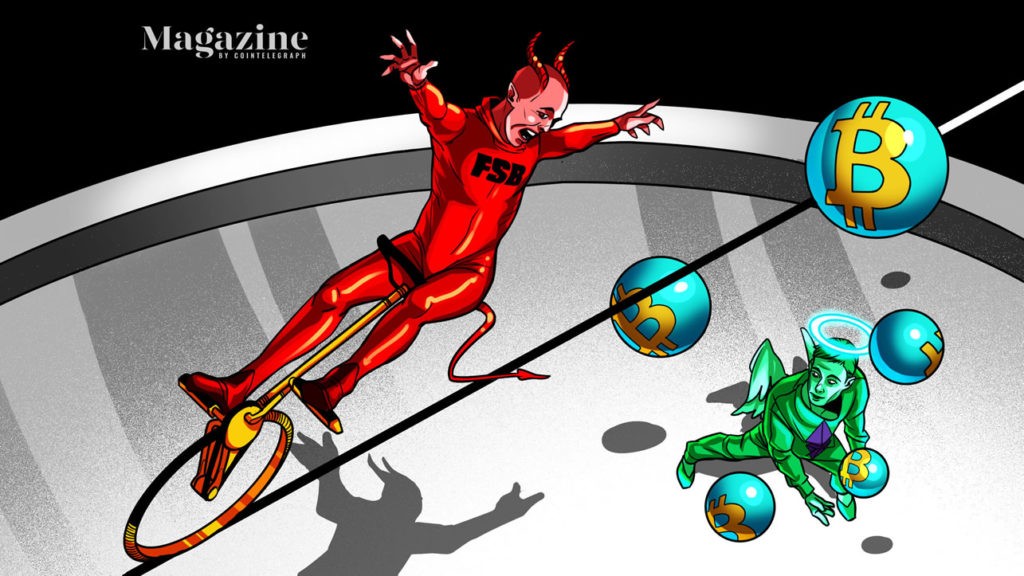“Be careful of stablecoins… they may cause instability!”
Very much in line with its name, the Financial Stability Board (FSB) “promotes international financial stability.”
At least, it’s supposed to.
The group could never be accused of sitting on its hands. It has three committees, all standing, charged with the responsibilities of assessing risks, measuring global cooperation, and monitoring the implementation of agreed-upon standards.
Last year, the G20 asked the FSB to examine any risks associated with stablecoins and propose any regulations that might be required to deal with them.
Last week, the board delivered their findings. Complete with a set of ten recommendations (an average of about one per month since they began exploring the issue), the FSB made one particular assertion that caught the eye:
“During periods of stress, households in some countries might come to regard [stablecoins] as a safe store of value over existing fiat currencies and exacerbate destabilizing capital flows. Volatile capital flows can have a destabilizing effect on exchange rates and on domestic bank funding and intermediation.”
Did I Read That Right?
Yep. The FSB is concerned about the instability that stablecoins could pose to national economies, especially in situations where sovereign fiat currencies are failing.
Wait…
Only 13 years ago Zimbabwe had a daily inflation rate close to 100%. Prices doubled every 24 hours. In the mid-90s the former Yugoslavia saw prices double every day-and-a-half. Post-war Hungary saw doubling prices every 15 hours. That’s an annual inflation rate of 4.19 x 1016%.
Argentina, Bolivia, Brazil, Nicaragua, and Peru all saw hyperinflation in the 1980s and 1990s. Venezuela’s inflation rate is currently around 60 million percent.
With sovereign fiat currencies serving us so well, it’s clear that currencies that are inherently stable would be of concern to the Financial Stability Board.
It also makes one wonder if anyone on the board bothered to look out the window and notice that there’s a pandemic going on, with spikes in unemployment in the worst-hit countries expected to reach Great Depression levels.
If that’s not destabilizing, it’s hard to know what is.
So What’s Actually Going On?
The FSB, at the request of the G20, equates stability with states and central banks being in control and instability with states and central banks not being in control.
Control equals order equals stability.
Stablecoins – especially if they are global, decentralized, and pegged through algorithms – represent a complete lack of central control.
To the eyes of the FSB, that looks like instability.
What if people start rushing from unstable government-issued currencies to currencies that are stable and under nobody’s control?
What if we, the people, don’t particularly like the endless money-printing machine that devalues the sovereign currency of our country, and we’d prefer to hedge against the decisions of politicians and bankers who seem only to serve themselves?
Obviously we can’t have people running around with better ideas.
That would risk… instability.
Logic: a valuable quality that is difficult to teach.
For completely untethering from reality on the threat-to-stability that stablecoins represent, the FSB is this week’s winner of the inauspicious Epic Fail award.
Daily Transfer Values on the Ethereum Network Rival Bitcoin
On April 15th, Ethereum achieved parity with Bitcoin for daily transfer value. As noted by analytics firm Messari, it is the first time the Ethereum network has achieved that milestone.
Value transfer on Ethereum just reached parity with Bitcoin.
— Ryan Watkins (@RyanWatkins_) April 15, 2020
This is a story of the explosion of stablecoins in Q1 2020.
1/ pic.twitter.com/noKBvFbgFO
The cause for the Q1 2020 surge in Ethereum volume was the stablecoin market (the thing the FSB doesn’t like). As the coronavirus pandemic caused turmoil among all asset classes, crypto markets witnessed a flight to stablecoins, as investors sought refuge from volatility (that thing the FSB is supposed to protect against).
The transfer value parity moment that occurred mid-April saw both networks transfer around $1.5 billion in a single day. Some 80% of Ethereum’s value transfer is now accounted for by stablecoins, with Tether being a major component of that volume.
In fact USDT briefly overtook Ripple-backed XRP as the coin with the third highest market cap.
Stablecoins now account for 80% of daily transfer value on Ethereum, and they’re used for significantly larger transfers on average than Bitcoin.
— Ryan Watkins (@RyanWatkins_) April 15, 2020
Stablecoins simply have better product market fit for transferring value between exchanges, one of today's dominant use cases. pic.twitter.com/OUSQlsBFfF
Bitcoin Volumes Down From All-Time Highs
As Ethereum volumes surged, Bitcoin’s have almost halved from highs just shy of $3.5 billion a day. They reached lows at the end of last year, and have since grown along with Ethereum volumes for the first quarter of 2020.
Long criticized for sluggish transaction speeds, transactions per second on Ethereum now outpace those on the Bitcoin blockchain. Bitcoin transaction per second (TPS) figures peaked at 4.7 in 2017 but post-March 12th, they average around three TPS.
Ethereum now processes about nine transactions per second, which is also down from highs of 15 TPS in 2018. But network performance has vastly improved since the days of Crypto Kitties congestion, which saw pending transactions approach the 12,000 mark.
With Ethereum-based USDT volumes surpassing OMNI-based Tether, a booming DeFi economy, and a forthcoming upgrade to Ethereum 2.0, the smart contract platform is maturing fast.
And for that reason, we raise our glasses this week to Ethereum. The second-largest blockchain network nailed it.
Opinions expressed in this column are those of the author.

Paul de Havilland
Outrage as $1.8B ‘DGCX’ crypto scam ringleader mocks victims: Asia Express
